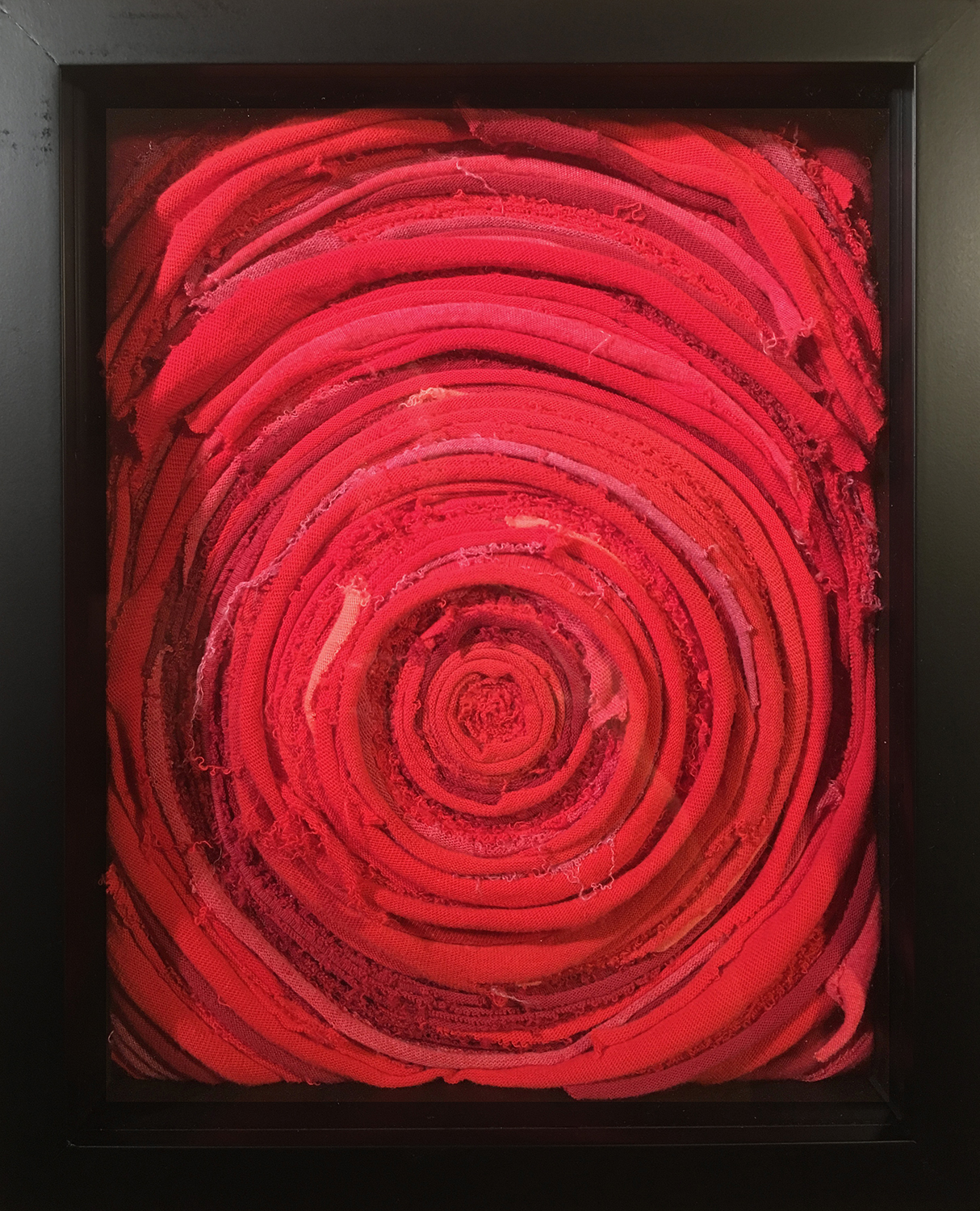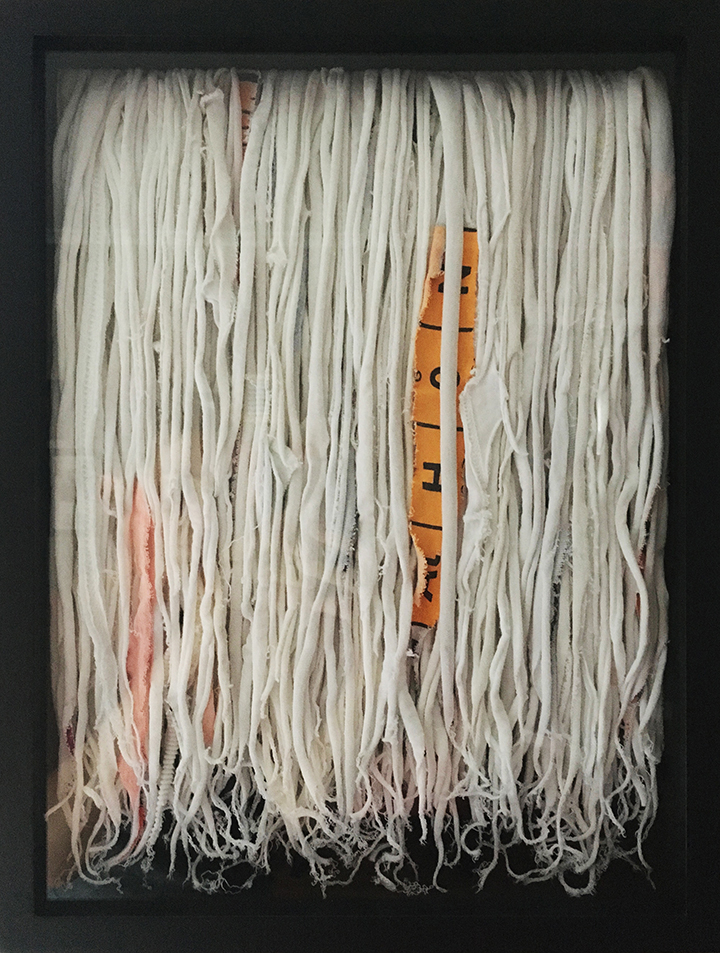


I’m always interested in writing about artists, and so far I’ve been given the opportunity to write about some very talented ones. I’ve gotten to write about painters, designers, filmmakers, writers and so many others. I don’t often come across fiber artists, so when I had the pleasure of looking at Sarah Kolar’s fiber art I knew that I wanted to talk to her about it.
Fiber art is unique in that it uses fabric fibers. The one other time I had encountered a fiber artist was a young Interlochen Arts Academy student that was using fiber art to create an interactive piece where the viewer could weave a piece of fabric through a loom. The point of the student’s piece was to create something that connected strangers. The loom was small and placed at a desk. Sarah’s fiber art is consuming and impossible to ignore. The more recent art pieces she created are large, gauzy, net-like fixtures that hang elegantly all over a gallery space. The viewer could feel like they’re walking through a weave of intricate webs because the pieces hang low, but what Sarah really wants people to think about when they look at her art is time.
“I want people to think about time. People feel contemplative when they look at it and oftentimes that’s the response, a lot of people think about the number of hours and I want that to bring up thinking about the labor that goes into the products we’re wearing.”
Sarah is a Midwest girl through and through. She and her significant other just moved to Traverse City from Omaha, Nebraska, she grew up in Iowa, went to grad school in Ohio and her parents are from Temperance and Lambertville, Michigan.
“I moved to Omaha after undergrad. It’s a really great community and there’s this place called Bemis Center for Contemporary Art. I became an intern there and that’s where I was given my first show.”
Sarah studied sculpture in school and it influences the way she creates her fiber art pieces.
“I look at things from a sculptural perspective. A lot of my work is more environmental and trying to build architecture. That’s how I structure a lot of my installations.”
Studying sculpture is what drew her to working with fiber art. Sculpture pieces have hard, set lines and she didn’t like that building sculptures left waste.
“In undergrad, we used a lot of plaster and I welded a bit. After cleaning up after creating a sculpture there was just a lot of material waste and I didn’t like that.”
She began using old bed sheets and pillowcases to create unique pieces and currently uses old t-shirts.
“I want people to think about consumption. What we do with them after they’re gone. It’s so easy for us to either throw it away or give it to Goodwill. Once it’s out of your hands you don’t think about it twice but it still exists somewhere. That’s what drove me to work with t-shirts.”
When she first began creating fiber pieces she would dye fabrics to create colorful pieces. She has since moved away from that and only uses white shirts that she unravels. Not just any white shirts will do, either. The shirts used are ones that Sarah finds at thrift stores. It’s be easy to grab an armload of white tees at the first store, but she doesn’t do that. She looks for a range of white shades, as well as things like natural staining from sweat.
“I like evidence of use. I want the t-shirt to show evidence of use whether that happens through stains or wear and tear. Whether that’s bodily stains or from paint. What I found creative about the whites is the gradient in the different varieties of dirtiness in the shirts.”
The way she uses the materials comes down to what kind of piece she will make and that usually depends on what gallery she’s showing in, and how much space she has.
“In a perfect world, I like to look at the gallery space and make work in relation to the space. The time it takes to make depends on the project. I’m really terrible at keeping track of hours but in grad school, it took me a whole semester, maybe a little bit longer for my thesis show.”
Creating the pieces is only half of the process. For a show, Sarah has to thoughtfully hang each piece to create the visual effect and ethereal feeling she wants the viewer to experience.
Where do the pieces go after a gallery show? Although they take up a lot of space, they’re lightweight, they collapse and can be easily stored.
Being an artist in a new, creative community can be difficult but Sarah is excited to be living in Traverse City and hopes to have an opportunity to contribute and show her work here. With her art being unique, beautiful and sustainable, she’s found a great community to continue to grow and create.



© 2023 - 910 Media Group





